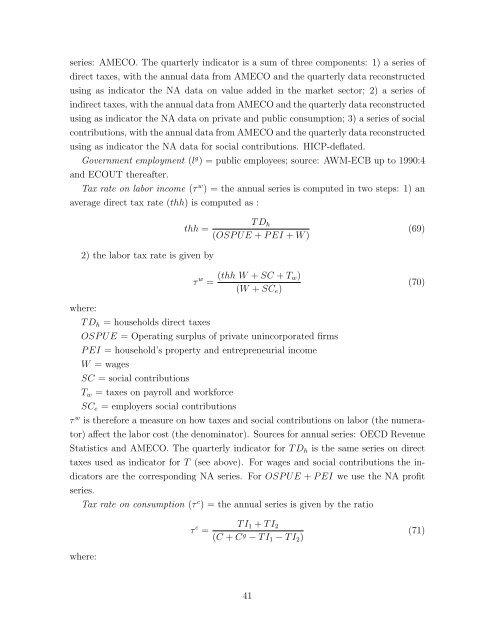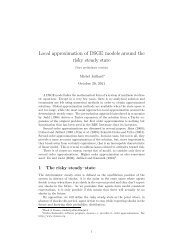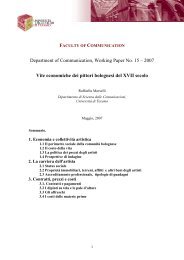The general equilibrium effects of fiscal policy
The general equilibrium effects of fiscal policy
The general equilibrium effects of fiscal policy
You also want an ePaper? Increase the reach of your titles
YUMPU automatically turns print PDFs into web optimized ePapers that Google loves.
series: AMECO. <strong>The</strong> quarterly indicator is a sum <strong>of</strong> three components: 1) a series <strong>of</strong>direct taxes, with the annual data from AMECO and the quarterly data reconstructedusing as indicator the NA data on value added in the market sector; 2) a series <strong>of</strong>indirect taxes, with the annual data from AMECO and the quarterly data reconstructedusing as indicator the NA data on private and public consumption; 3) a series <strong>of</strong> socialcontributions, with the annual data from AMECO and the quarterly data reconstructedusing as indicator the NA data for social contributions. HICP-deflated.Government employment (l g ) = public employees; source: AWM-ECB up to 1990:4and ECOUT thereafter.Tax rate on labor income (τ w ) = the annual series is computed in two steps: 1) anaverage direct tax rate (thh) is computed as :thh =T D h(OSP UE + P EI + W )(69)2) the labor tax rate is given byτ w = (thh W + SC + T w)(W + SC e )(70)where:T D h = households direct taxesOSP UE = Operating surplus <strong>of</strong> private unincorporated firmsP EI = household’s property and entrepreneurial incomeW = wagesSC = social contributionsT w = taxes on payroll and workforceSC e = employers social contributionsτ w is therefore a measure on how taxes and social contributions on labor (the numerator)affect the labor cost (the denominator). Sources for annual series: OECD RevenueStatistics and AMECO. <strong>The</strong> quarterly indicator for T D h is the same series on directtaxes used as indicator for T (see above). For wages and social contributions the indicatorsare the corresponding NA series. For OSP UE + P EI we use the NA pr<strong>of</strong>itseries.Tax rate on consumption (τ c ) = the annual series is given by the ratioτ c =T I 1 + T I 2(C + C g − T I 1 − T I 2 )(71)where:41





